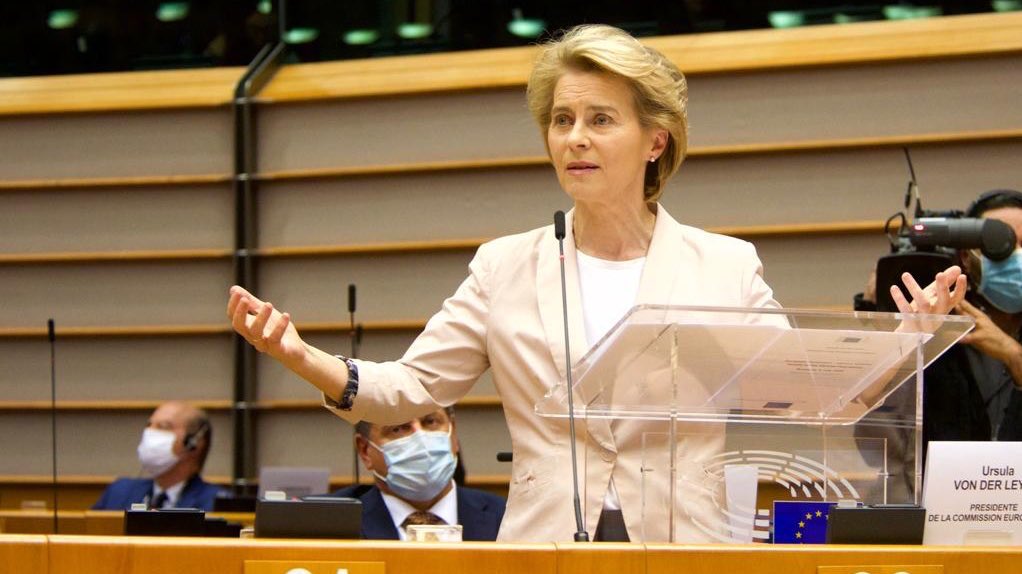The European budget after COVID-19. Challenges, Prospects and Opportunities

During the European Council this week all eyes are, again, on the negotiations for the future European Union (EU) budget. Analysts tended to focus mainly on two things. First, the evolution of the sums of money that will be agreed on for the future European Recovery Plan & next Multi-Annual Financial Framework. Second, the opposition of the so-called “Frugal four” and their desire for adopting a scaled down budget and attaching more conditions to EU money before being disbursed to hard-hit countries, such as Italy and Spain. However, other aspects are neglected and would require more in-depth discussion. European, national and sub-national authorities are facing other challenges in spending and implementing the more than 2 billion EUR recovery package. This article argues that issues of strategic vision (e.g. intertwining the Next Generation EU with the MFF logic of EU funds), absorption and administrative capacity need prioritising in order to manage the post-covid aid process. Not dealing with these aspects more thoroughly will affect what could be done for a medium- and long-term recovery plan. The blog ends with several brief recommendations for policy-makers, stakeholders and citizens.
More money, more problems?
During the launch of the European Commission proposals for a post-pandemic Recovery Plan, Ursula von der Leyen symbolically stated: “This is Europe’s moment”. The plan was branded as a call for solidarity for Europe’s ‘Next Generation’. To achieve this, the Commission requests from EU Member States to fund this major investment programme with up to 1.85 trillion EUR, very close to my previous analysis.
Going beyond the symbolical nature of the Recovery Plan, and the much-debated Hamiltonian moment for Europe, a simple fact requires emphasis: more European funds are likely to generate more complexities and specific challenges. This is not to say that less funds are needed, but to acknowledge that European and national institutions did not have sufficient time to reflect on and potentially prepare for these complexities.
Moreover, skirmishes between member states around the European budget tend to drive away the attention from the technical towards the political. A potential second wave of the COVID-19 pandemic is looming which would shrink even more the window of opportunity to discuss about policy intervention aspects. This is because most governments will again face health-related pressures and engage mainly in putting out the ‘’fire’’. Consequently, the aim of this blog is to discuss three relatively ignored aspects of the upcoming European budget: its strategic and intervention logic, the challenges of absorption and of administrative capacity that governments will face in spending this substantial amount of funding.
Is the European Recovery Plan fit for the MFF logic?
The post-2020 European Recovery package is structured in three main schemes for support (Figure 1). This includes the already agreed upon liquidity measures of the European Central Bank (ECB), the novel Next Generation EU programme and the reinforced Multi-Annual Financial Framework (MFF). Leaving aside the ECB macro-economic measures, the Next Generation EU and the MFF seem to work in tandem. That means that much of the logic of the latter would apply and potentially intertwine with the former. In other words, there has been no actual time to envision a separate strategic logic for the Next Generation EU programme. This 750 billion EUR scheme will itself be structured in three main pillars: a) Recovery and Resilience Tool; b) InvestEU; c) Strengthening other programmes dealing with health, research and cooperation in addressing this and future pandemics.
At a first glance, and given its concrete structure, the relationship between the MFF and the Next Generation EU may not seem problematic. However, several aspects do require scrutiny.
First, the Next Generation EU might simply be an annex of the MFF working within its intervention logic and adopting its policy templates, operationalisation and ways of doing things.
Second, the Next Generation EU might turn out to be problematic given the short time span in which it is supposed to be implemented (2020-24). Members of European Parliament have, indeed, called upon an extension of this implementation period.
Thirdly, and most importantly, both the MFF and Next Generation EU follow certain core strategic priorities such as the development of carbon neutral, digital and fair economies. Nevertheless, the overall strategic logic behind them is rather thin and not well embedded in a European long-term vision for development. This potentially reveals the lack of an EU grand strategy and its inability to develop a concrete narrative and goals for the future, in light of the multiple crises it has endured in the last few years.
Overall, the calls for solidarity and cohesion behind these programmes, and the EU’s momentous change in developing closer cooperation in fighting the pandemic, cannot replace a vision behind for future development. These calls will not suffice given the potential policy and technical complexities that will develop in actually spending this money.
Figure 1: Structure of European Recovery Package – May 2020

Challenges in terms of absorption and administrative capacity
There are several obvious challenges that European, national and subnational stakeholders will face in implementing these large funding programmes. Only two are discussed here.
Firstly, the issue of absorption - as in managing to get and effectively spend this funding during an allocated time frame - will prove to be extremely difficult. From the current 2014-2020 MFF, EU member states have absorbed until the end of 2019 only 41% of the total allocations from European Structural and Investment Funds (ESIF). This leaves countries with another three years (until 2023) to spend the remaining funds (N+3 rule). This will be done in parallel with the new cash injections from the 2021-2027 MFF and the Next Generation EU programmes. In parallel, many national governments are developing their own post-pandemic economic recovery programmes. The timeliness of absorption is a problematic feature of EU finances in general and the current pandemic dominated environment will add extra pressure for spending the money as soon as possible. Not only will this affect the quality of the projects being invested in but will also add considerable pressure on several thousand administrators’ working on this at the EU and national / sub-national level.
Secondly, drawing on the latter point, the state and administrative capacity of countries will be key. However, it is rather well known that administrative capacity remains a big challenge for several member states, affecting their ability to effectively absorb EU funds. This applies to both administrators’ and EU funds beneficiaries (local public administrations, NGOs, private firms). In light of the extra workload and upcoming additional EU funding, more human resources (e.g. new staff) will be needed to process it. Developing the latter’s’ capacity, under current conditions, might be difficult to achieve. Another study also highlights these pressures and notes that many of the interventions for the future recovery plan will focus on healthcare, an area in which specialised institutions dealing with EU funds (e.g. Managing Authorities, Intermediate Bodies, and Regional Development Agencies) have insufficient experience.
Finally, both EU funds absorption and administrative capacity are contingent upon domestic political support. Politicians have so far engaged in firefighting tactics and in most countries have been slow in responding to the economic and social aftermath of the pandemic. What is more, corona politics has developed in many EU member states leading to internal bickering and stalemate. Without clear political leadership and support, absorption and administrative capacity development will be even more problematic. Consequently, the Next Generation EU and the future MFF 2021-2027 might have less of a positive impact for the upcoming generations.
Conclusions and some potential solutions and recommendations
As argued in this article, there are three core areas which might prove to be highly problematic and moderate the actual impact of a European Recovery package: the strategic logic (intertwined, thin and unclear vision for development), absorption (timeliness, pressure) and capacity (ability of stakeholders working on the ground, lack of time for training, little knowledge in the area of healthcare). To address these aspects several potential solutions might prove useful.
Firstly, although more time would be required for this, there needs to be a clearer strategic vision underpinning the European post-corona economic and social recovery. Policy-makers need to first acknowledge this and allow ideas to develop and simmer. In addition, for a comprehensive vision for development, more is needed in terms of engaging the public through various innovative tools (e.g. participatory budgeting). Probably now this will not be possible, but from 2025 onwards such innovative instruments should not be ignored anymore.
Secondly, more needs to be done in addressing the problematic aspects of EU funds absorption and administrative capacity. On the one hand, a rethink of the MFF absorption, in light of the slow absorption rate and problematic timings need serious adjustment in future programmes. In the short term, Brussels needs to be more willing to finance already developed projects or to reimburse member states for their healthcare and social welfare related spending as to speed up the absorption process. On the other hand, no stakeholder can ignore the issue of administrative capacity anymore. More funds, time and political support needs to be invested in this, especially in training and supporting administrators and EU funds beneficiaries on the ground.
Finally, and in addition to the above, the substantial amount of EU funding and its spending will likely increase North-South and East-West tensions. This will happen along the line of several themes such as cohesion/solidarity or conditionalities such as structural reforms and the Rule of Law. Moreover, the substantial amount of funds might also provide opportunities for corruption and rent seeking in several countries across the continent. Therefore, politicians, administrators and citizens need to find more ways to develop accountability mechanisms, increase dialogue and cooperate on all these matters.
Indeed, the way in which this crisis will be dealt with will affect how the EU will be perceived in the next decade. The MFF and the Next Generation EU programmes are only instruments meant to help European governments and citizens recover from this pandemic. How well these funds will be spent will have an impact on Brussels’ post COVID-19 legitimacy. It is up to the European Council to realise this and to align much more the European integration process to the challenges and demands of the 21st century.
Other blogs:
Also read
-
Dear members of the UM Community,
As we start heading for the end of the academic year, it’s time for another update on what has been going on at the University Council.
-
The 1st of April 2024 marks the day when Germany adopted the most progressive legal approach to cannabis in Europe. While for the Dutch, this may sound like an April’s fool prank, it is far from it: The new German CanG (Cannabis Law) regulates the consumption, possession, and supply of the soft drug...
-
Dear members of the UM Community,
The University Council does not only hold plenary meetings, during which all members of the Council meet with the Executive Board to formally consent to decisions and advise on policy proposals. A lot of work is done in three committees, covering Strategy, Research &...

